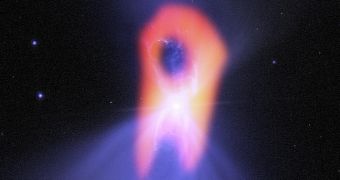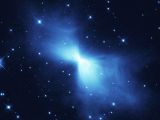The Atacama Large Millimeter/submillimeter Array (ALMA) is starting to produce the kind of great scientific results it was built for. Astronomers have pointed the radio telescope at the coolest place in the universe, that we know of at least.
The region in the Boomerang nebula is just one degree Kelvin (-272C or -458 Fahrenheit), just one degree above absolute zero.
What's strange is that the region is actually colder than the universe itself, which is still heated up to a few degrees by the light of the early universe.
Astronomers have now gotten a better picture of the region and what they saw was quite strange. The results of the research were published in a paper in the Astrophysical Journal.
"This ultra-cold object is extremely intriguing and we're learning much more about its true nature with ALMA," said Raghvendra Sahai lead author of the paper.
"What seemed like a double lobe, or boomerang shape, from Earth-based optical telescopes, is actually a much broader structure that is expanding rapidly into space," he added.
The new study has revealed more details about the nebula, which weren't seen by other telescopes, particularly not in visible light.
The observations revealed that the central star is hidden away by dust which only lets light escape in certain directions, giving the nebula it's distinct shape and its name. "These minute dust grains have created a mask that shades a portion of the central star and allows its light to leak out only in narrow but opposite directions into the cloud, giving it an hourglass appearance," NASA explained.
Astronomers now believe the Boomerang nebula is on its way to becoming a planetary nebula. But the central star hasn't collapsed yet, it's still in the red giant phase, even if it has blow off quite a lot of material into space already. The expansion of the star is also responsible for the drop in temperature.

 14 DAY TRIAL //
14 DAY TRIAL // 
